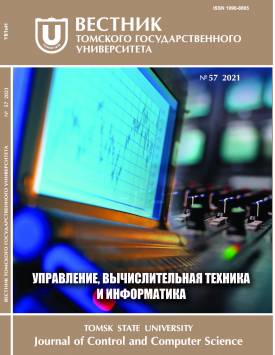Design and implementation of a set of programs for modeling the technological process of forming aluminum alloys based on an object-oriented approach
The study of the main technological stages of metallurgical production, including a detailed analysis of the established principles of the formation of aluminum alloys, allows not only to identify, but also to systematically systematize significant negative trends that have a direct impact on the final quality and consumer properties of products, taking into account the specified requirements of the order portfolio. In the context of significant development of IT tools and due to the availability of a wide range of modern software development tools, unique opportunities are opening up for conducting low-cost optimization of established production modes of operation without significantly changing or interrupting them. In this case, there is a need to carry out a series of research and development work aimed at the design and high-level object-oriented implementation of the structure of special software systems intended for information support of technological personnel through continuous monitoring of key parameters of the modeled process. The study of the technological foundations of the production of aluminum alloys in cooperation with «RUSAL» made it possible to establish that the process of modifying the liquid melt occurs empirically based on the use of ineffective means and calculation methods designed to calculate the amount of mass additions of the available components, which leads to periodic errors in the blending of the aluminum melt and an increase in the cost of metal production. To solve this technological problem, it is proposed to design a special complex of programs in the form of an automated information and training system «Aluminshchik», which would allow simulating the process of forming aluminum alloys, taking into account various requirements and restrictions, as well as providing a search for the optimal solution to the technological problem of batching. Further development and software implementation of the structure of the information and training system «Aluminshchik» was carried out in the high-level object-oriented programming language C # using the built-in tools of the Microsoft Visual Studio Community development environment. At the moment, in the developed information and training system «Aluminshchik», three basic classes are used: Form, Mixer and Bucket. The presented classes are the central structural units and directly interact with each other. Reasonable selection of visual components of software development, available in the executable environment, contributed to the creation of a multifunctional user interface of the software product. Ultimately, a special software product was developed, which is an effective tool for reducing the number of errors in the blending of aluminum melt by increasing the level of qualification of technological personnel, which undoubtedly contributes to improving the quality of finished products and other technical and economic indicators of the foundry as a result of the search for more rational options for using available material resources.
Keywords
software package, object-oriented approach, computational experiment, mathematical model, technological personnelAuthors
| Name | Organization | |
| Kalashnikov Sergey N. | Siberian State Industrial University | s.n.kalashnikov@yandex.ru |
| Martusevich Efim A. | Siberian State Industrial University | program.pro666@yandex.ru |
| Martusevich Elena V. | Siberian State Industrial University | science_nvkz@yandex.ru |
| Rybenko Inna A. | Siberian State Industrial University | rybenkoi@mail.ru |
| Buintsev Vladimir N. | Siberian State Industrial University | buintcev@mail.ru |
References

Design and implementation of a set of programs for modeling the technological process of forming aluminum alloys based on an object-oriented approach | Vestnik Tomskogo gosudarstvennogo universiteta. Upravlenie, vychislitelnaja tehnika i informatika – Tomsk State University Journal of Control and Computer Science. 2021. № 57. DOI: 10.17223/19988605/57/12
